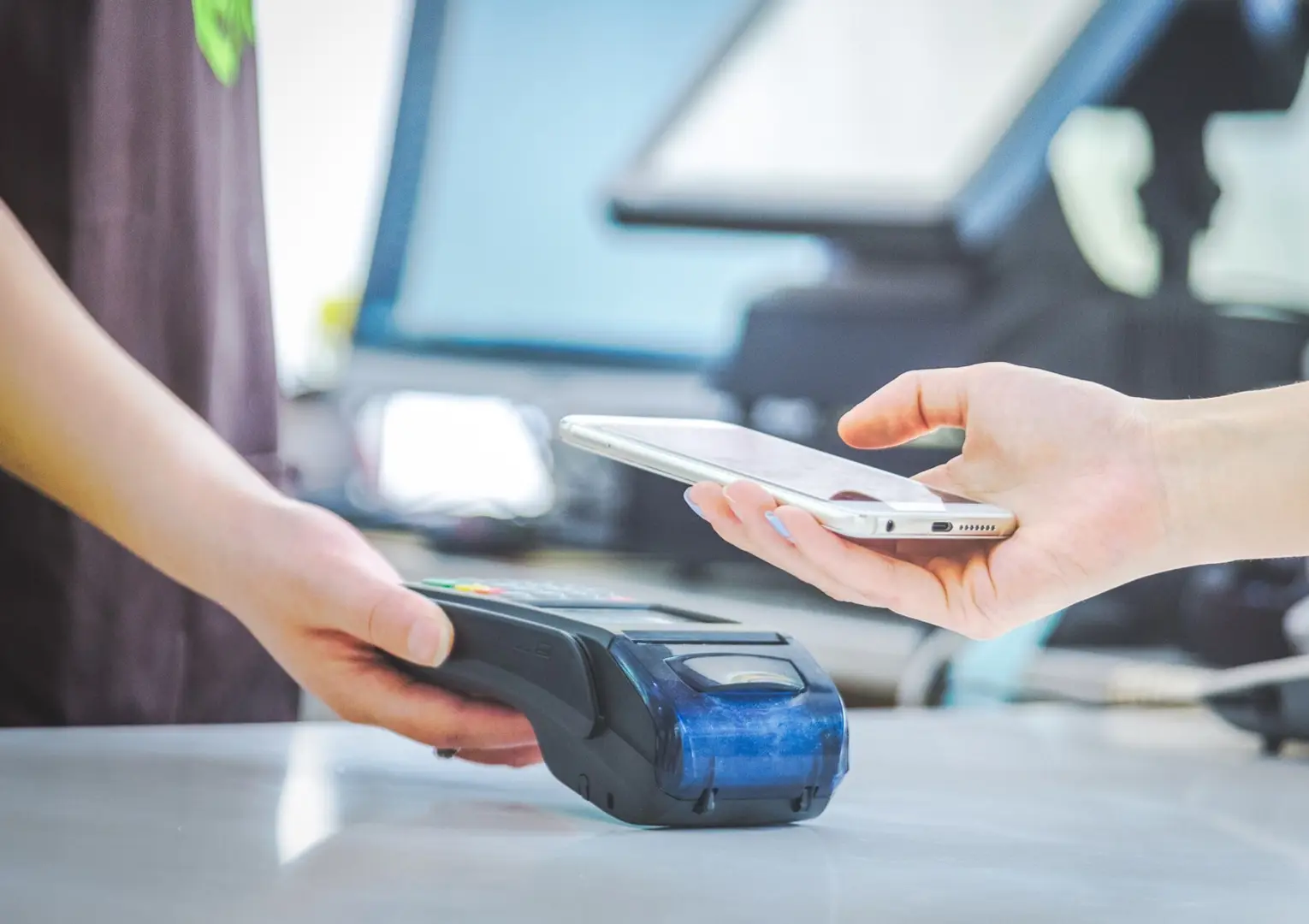E-Payments Help Businesses Save Time and Money — Learn the Advantages and Disadvantages!
May 12, 2025
Share This Article

Today, cash is no longer the primary choice for payments, as many people prefer more practical alternative payment methods. One of them is electronic payment, commonly known as e-payment.
With the continuous advancement of banking and technology industries, along with the growth of the online shopping market, both sellers and buyers need a fast payment method. This is where e-payments play a significant role.
If your business hasn’t adopted e-payment yet and you're interested in starting, here is a complete explanation of electronic payments.
Definition of e-Payment
Also known as an Electronic Payment System (EPS), e-payment is a digital method for transferring funds using electronic media such as mobile apps, online banking, and various other payment methods.
This payment method offers a secure, efficient, and convenient alternative by simplifying financial transactions and enabling fast, paperless payments.
Moreover, this electronic payment system has revolutionized the way people manage their finances by making transactions faster, more efficient, and accessible to anyone with a bank account.
By eliminating the need for physical currency, e-payments have significantly reduced transaction costs, eliminated paperwork, and even lowered labor costs for businesses.
How Electronic Payments Work
Electronic payments operate in several different ways, with many platforms to choose from.
If you open an account at a bank, money can be deposited into that account using a bank card or another bank account. Then, when shopping online, the funds will be deducted from that balance.
If you're selling goods, the payment will be transferred to your registered bank account. However, this usually takes 1–2 business days depending on the payment system used.
For those who feel uncomfortable storing money online, as long as your credit card or bank account is linked to an electronic payment platform, you can still make transactions.
So, when making a purchase, the system will access your financial data from the linked offline account and deduct the money directly.
In essence, to make an e-payment—whether buying or selling—all you need is an account with an electronic payment service and its account details.
Also Read: What Is Electronic Payment? Benefits and Options
Types of e-Payment Methods
If your business accepts electronic payments, it means you can expand your reach while keeping loyal customers coming back. Here are some of the most popular types of e-payment methods today.
Card Payments
Credit and debit cards remain the most popular form of electronic payment worldwide. However, their popularity is declining among younger consumers.
According to a survey by EY, only 39% of Gen Z frequently use credit cards, compared to 51% of older generations.
Contactless Payments
Also known as tap-to-pay, this method uses a contactless card that can be tapped or waved over a payment gateway, utilizing Near Field Communication (NFC) to wirelessly transfer data.
Thanks to its security and efficiency, the number of users has surged in recent years. Analysts predict that the value of tap-to-pay digital wallet transactions will increase by 150% by 2028.
Digital Wallet Payments
Digital wallets, such as Gopay, OVO, Shopeepay, Dana, and more, are financial applications that store customer account information electronically.
This payment method allows buyers to pay for goods and track their payment history using a smartphone or tablet with the digital wallet application.
Internet Banking Payments
This payment method involves bank transfers via the internet or online banking, which allows funds to be electronically transferred from one account to another.
Payments can be made through a computer or any device with internet access connected to a bank account.
QR Code Payments
QR codes are a type of barcode that stores information in the form of pixels.
In this payment method, when scanned by a customer's smartphone camera, the code directs the user to a relevant payment page, allowing payment to be made via the selected method.
QR code payments enable consumers to pay easily, anywhere and anytime.
Advantages and Disadvantages of These Payment Methods
1. Advantages
Electronic payment systems offer numerous benefits, including the following:
Faster and More Accurate
Electronic payments allow funds to be transferred quickly and accurately, reducing the risk of delays or payment errors.
Cost Reduction
Electronic payment systems significantly reduce transaction costs for both individuals and businesses. This eliminates the need for expenses related to printing, shipping, or labor for processing paper-based payments.
Enhanced Security
With strong encryption and authentication measures protecting sensitive financial data, electronic payments reduce the risk of fraud and unauthorized transactions. Users can also monitor their accounts in real time to quickly detect any suspicious activity.
More Convenient
Whether shopping online, paying bills, or splitting a restaurant bill with friends, e-payments offer unparalleled convenience, making them easy to use in various situations.
Wider Accessibility
Electronic payment systems are accessible 24/7, enabling users to make transactions anytime and from anywhere as long as they have an internet connection. This is especially valuable for international transactions, as it eliminates geographical barriers.
Better Recordkeeping and Tracking
Every e-payment transaction is automatically recorded in detailed transaction records, making it easier for both businesses and individuals to maintain accurate financial documentation.
2. Disadvantages
Despite its many advantages, e-payment systems also have some drawbacks, such as:
Security Issues
Although e-payments are generally secure, they remain vulnerable to security breaches such as hacking, phishing, and identity theft.
Technical Issues
Since e-payment systems rely on technology, any technical disruptions or system failures can interrupt transactions.
Privacy Concerns
Users may feel uncomfortable about the collection and storage of their personal information by electronic payment providers, even though these providers are legally obligated to protect user data.
Transaction Fees
Some electronic payment systems may charge transaction fees, which can accumulate over time. For some users, these fees can become burdensome.
Also Read: What Is an E-Wallet: How It Works, Types, and Its Benefits for Businesses.
Why Does Your Business Need e-Payment?
If your business is still using physical payments, it’s okay, but you’re sacrificing valuable time that could be better spent improving the payment process.
Here are several reasons why your business should consider switching to electronic payments.
1. Save Time
Checks take days to be processed, while cash requires a visit to the bank. Electronic payments, on the other hand, can automate many of the manual accounting processes that are frequently performed.
2. Help Save Money
Historically, cash and check fraud were difficult to track. So, protecting your business from fraud is another financial advantage of electronic payment systems.
Top-tier electronic payment solutions are very secure and are often supported by machine learning. Additionally, digitalized systems provide real-time metrics for business owners to maintain an accurate audit trail.
3. Attract New Customers and Retain Loyal Ones
Customer acquisition and retention are crucial to your business's success. In fact, 59% of businesses say that their customers fail to complete transactions because their preferred payment method is not available.
For business owners looking to implement e-payment solutions, you can leverage the POS feature from the Labamu app. Here, customers can make payments using various methods, including bank transfers, QRIS, e-wallets, and credit cards.
Moreover, there is also the "Reports" feature that provides detailed and easily understandable sales reports, including transactions made through e-payments. So, no need to worry about lost transactions!
That’s the overview of e-payment, a practical payment method that can help your business grow. Go ahead and download Labamu from Google Play or the App Store to get started!














